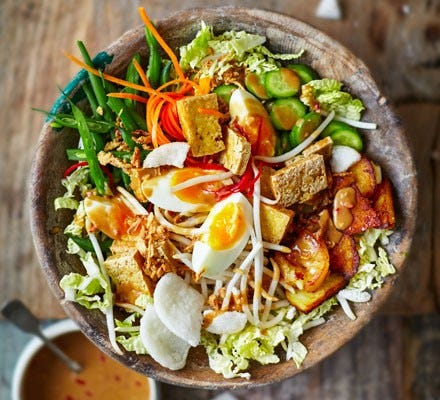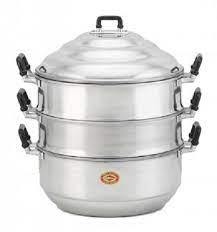Five years ago, I began volunteering at a food distribution charity. We deliver good nutritious food to working people on low incomes, schools, the homeless, the elderly, refuges and refugees, people struggling with mental health and addiction, food which, if we didn’t accept it, would go unnecessarily to a landfill. It comes from supermarkets, ready-meal producers, sandwich makers, butchers, fishmongers, bakeries, big-box food warehouses, delivery services, club retail stores and more.
Some is surplus food but for the most part, it’s fresh food labelled ‘Best Before’. The general public don’t seem to understand this doesn’t mean the food becomes suddenly inedible, dangerous even, after the date cited which can often be many days ahead. Simply that it isn’t in its most glorious prime. Me, I’m best before my second gin-and-tonic. The fruits and vegetables may have developed a bruise, easily sliced away. The meat or the fish may have a date that makes it imperative for us to get it delivered with urgency. It is all food that doesn’t merit being thrown away.
Especially as increasing numbers of innocent human beings fall into the burning new poverty classification, ‘food poor’. Fortunate families fret their children will never get onto the property ladder. Too many others panic their children will go to bed without supper and to school without breakfast.
Of the 2.5 billion tonnes of food the entire world wastes annually, American figures are the highest: 60 million tonnes, worth around $1600 annually in a family of four. Imagine buying then tossing 975 apples straight into the garbage. Multiply those $1600 by 18 - the number of years a child typically lives at home, and you have at least one year’s tuition fees at a private American college or university. In the UK, every year, every household wastes 4.5 million tonnes of edible food, at an average cost of £60/$76 a month. Far less, yes, but why spend any sum of money on space in a landfill?
Add to the general public’s ignorance over labelling and food safety the impact of austerity and recession, and the problem of food waste increases. For the past two or three years at our charity, the number of farmers who call has increased: If you can get to us with crates and spades, they say, you can help yourselves to whatever you can transport from our fields and trees. Post-Brexit they can’t summon the pickers who used to come from Europe to harvest their crops to send to supermarkets - the Brits won’t do the demanding work. Apples and pears and plums and more rot on the branches. Potatoes, carrots, celeriac, parsnips stay buried in the soil. We go, we dig, and we glean.
All good for the reduction of food waste. Except that since the massive hike in UK fuel prices, another obstacle has arisen: charities are increasingly less able to accept raw root vegetables because the people they get passed on to cannot afford to turn their stoves on for the length of time it takes to cook them. So we have opened a kitchen depot to do this ourselves, producing ready-meals that only need a few minutes in a microwave.
I’m one of the fortunates who doesn’t spend my days frantic over how to choose between feeding a family or keeping it warm, feeding my children or feeding myself. Yet along with several friends, I don’t switch on my heating unless there are others staying. I haven’t turned on my oven for three years unless I’m feeding others. (I miss a skin-shattering baked potato.) But if fuel is so much more expensive, so, too, are restaurant meals, theatre tickets, travel adventures. It’s a question of what you want to prioritise, because these days the average Brit can’t have it all. And I want those three, plus local or artisanal food that benefits my health and its producer but which makes it more expensive. Besides, I’ve plenty of warm sweaters. Even if the effect of my conduct is negligible, I resent filling the greedy coffers of the directors and shareholders of fuel-supply companies with even higher profits.
Long before rocketing fuel prices, I maximised oven usage, sliding roasts and puddings and pies for several days ahead in at the same time. These days, I cook on the stove-top. The wok is my most used pan - stir fries are made in minutes. But my steamer has taken on a new life.
It’s not a traditional steamer, that single pan with holes in its base set over a lower pan that holds the simmering water. Mine is a cheap aluminium affair in three stacked layers with a domed lid that I bought in Thailand decades ago and lugged home in my backpack. So many separate elements can be cooked simultaneously, with another something - pasta or potatoes, perhaps - simmered in the water fuelling the steam.
It’s perfect for gado-gado, that Indonesian warm ‘salad’ of raw or steamed, blanched or lightly boiled, vegetables. Sold all over Indonesia, from street stalls and in restaurants, gado-gado can be a filling meal on its own or a side dish. Each area of the country has its own variation, using anything from boiled potatoes, steamed green beans (which in Indonesia would be the yard-long bean kacang panjang increasingly available in Asian supermarkets), carrots and chopped cabbage, bitter gourd, bean sprouts and more - whatever is available. Quartered hard-boiled eggs are another addition, as is fried tofu or tempeh.
Authentically, boiled rice is never part of gado-gado. ‘Gado’, or ‘menggado’ the verb, means to eat something without rice. But lontong can be included - rice that has been wrapped in banana leaves for a long, slow steam that produces a sticky wad of rice for cutting into cubes. It’s the rice that in Indonesia is regularly served with satay. You can cheat by making it with boil-in-the-bag rice that isn’t already parboiled. Check the label. Follow the instructions on the box but increase the simmering period to 1¼ hours then drain and cool completely before removing the bag and cutting the compressed rice into 2cm/1in square cubes. The gado-gado is served warm, liberally coated with a peanut sauce which is not the same as the one for satay.

Serves 6. For less do the maths/math - it’s eimple even for me…
90g/3oz of around 6 different vegetables - cabbage, beans, carrots, cauliflower, broken into small florets, beansprouts, raw potato, cucumber - what’s languishing in your veg drawer?
Slice the beans and carrots, shred the cabbage, thickly slice the cucumber and potato.
For the ‘bumbu’ - peanut sauce
Try to avoid short-cutting with crunchy peanut butter, it won’t make half as good a bumbu.
120g/4oz peanuts
vegetable oil
1 slice from a block of terasi or Malay belacan
1 clove garlic
2 shallots
1/2 teaspoon chilli powder
1/3 brown sugar
2 cups water
30g/1oz creamed coconut
juice 1 lime or half a lemon
1 hard boiled egg quartered
prawn crackers (optional)
Fry the peanuts in the oil, 5 minutes then drain on paper towels and cool. Pound or grind them into a fine powder. Crush the terasi, garlic and shallots into a rough paste. Fry this in 1 tablespoon oil for 1 minute. With the vent on high: it’s pungent. Add the chilli powder, sugar and 2 cupfuls water. Bring to the boil then add the peanuts. Stir the mixture, lower the heat and simmer, stirring occasionally, till thick. Check for seasoning, adding salt to taste if necessary (terasi is salty). Add the coconut, stirring until dissolved.
Steam or boil each vegetable that needs cooking (not the cucumber and beansprouts) separately until tender. Drain and set them without mixing them up on a large platter, add the egg quarters, pour over the warm peanut bumbu and pass round a bowl of fried krupuk/prawn crackers to crumble over. People help themselves to whichever vegetables they want.






I love gado gado! It's one of the world's greatest salads, alongside rojak, Caesar, and som tum.
There’s “best before” and “use by”—I now know that best before is a guideline or suggestion. Still haven’t figured out whether “use by” is meant to be an order and a warning or whether it’s just a gloomy, bullying version of “best before.”